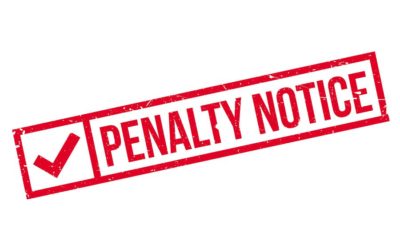8th Circuit Reverses Tax Court and Holds CRP Payments Not Subject to SECA
On Friday October 10, 2014, the U.S. Court of Appeals for the 8th Circuit overturned the Tax Court’s decision in Morehouse v. Commissioner and held, in a two-to-one decision, that CRP payments made to non-farmers constitute rentals from real estate for purposes of § 1402(a)(1) and are excluded from the self-employment tax (“SECA”).[fusion_builder_container hundred_percent=”yes” overflow=”visible”][fusion_builder_row][fusion_builder_column type=”1_1″ background_position=”left top” background_color=”” border_size=”” border_color=”” border_style=”solid” spacing=”yes” background_image=”” background_repeat=”no-repeat” padding=”” margin_top=”0px” margin_bottom=”0px” class=”” id=”” animation_type=”” animation_speed=”0.3″ animation_direction=”left” hide_on_mobile=”no” center_content=”no” min_height=”none”][1]
What is the CRP?
Established in 1985 under the Regan Administration, the Conservation Reserve Program (CRP) is a voluntary conservation program for land that has been used for farming or ranching. The long-term goal of the program is to re-establish valuable land cover to help improve water quality, prevent soil erosion, and reduce loss of wildlife habitat.
The CRP offers owners of environmentally sensitive land the option to enter into a 10 to 15 year contract under which the owners agree to implement a conservation plan. Typically, owners agree to refrain from using the land for farming and ranching, to plant and maintain species to improve environmental quality, and to perform certain services to control weeds and pests.
In return, the landowners receive an “annual rental payment” for each year of the contract and cost-sharing payments for certain costs of carrying out the conservation plan.
What did taxpayer do under the CRP contract?
In 1994, the taxpayer, Rollin Morehouse, inherited 400 acres of land in South Dakota and then in 1997 the taxpayer enrolled a portion of the property into the CRP.
With respect to the property enrolled in CRP, the CRP contract required the taxpayer to implement conservation plans for his property and forbade the taxpayer from producing agricultural commodities on his property. The conservation plans generally required the taxpayer to establish and maintain specific types of vegetative cover on portions of his land and periodically engage in weed and pest control.
In addition, the taxpayer was also required to fulfill certain annual paperwork obligations and he visited the enrolled property approximately three times each year to ensure the properties complied with the CRP contract. In return, the Taxpayer received an “annual rental payment” and reimbursement for certain costs for implementing the conservation plans.
The taxpayer received CRP payments of $37,872 in both 2006 and 2007.
Tax Return Treatment and IRS Dispute
The taxpayer timely filed tax return forms for both years and identified their occupations as “self-employed.” On Schedules E of their tax returns, the taxpayer listed the CRP payments for both years as “rents received,” and thus the CRP payments were not taxed as self-employment income.
The IRS Commissioner disagreed and sent a notice of deficiency to the taxpayer. The notice stated the CRP payments should have been reported as income on a Schedule F, Profit or Loss From Farming, and were thus unreported self-employment income, which should have been taxed.
The taxpayer petitioned the Tax Court for review of the Commissioner’s determination that the CRP payments were taxable as income from self-employment.
Tax Court Held in Favor of IRS
The Tax Court was confronted with two main issues: (i) whether the taxpayer’s arrangement constituted a “trade or business”; and (ii) whether the payments under the CRP constituted rentals from real estate and therefore excluded from SECA.
The Tax Court sustained the Commissioner’s determination by first concluding that the taxpayer was “engaged in the business of participating in the CRP . . . with the primary intent of making a profit” and that there was a sufficient nexus between this business and the CRP payments. As a result, the payments were categorized as net earnings from self-employment. The Tax Court also rejected the assertion that CRP payments were rentals from real estate under 26 U.S.C. § 1402(a)(1). The Tax Court instead concluded CRP payments were proceeds from taxpayer’s own use of his land and thus did not constitute rent.[2]
The taxpayer appealed to the 8th Circuit Court of Appeals.
8th Circuit Overturned the Tax Court’s Opinion and Held in Favor of Taxpayer
In its opinion, the 8th Circuit did not decide whether the taxpayer’s activities constituted a trade or business. The 8th Circuit noted that under the CRP program, farmers are usually called upon to conduct a “small subset” of activities similar to those used in a portion of their general farming operations. But, the court noted that the same cannot be said for non-farmers. Nevertheless, the 8th Circuit stopped short of holding that the taxpayer’s activities did not constitute a trade or business.[3]
Instead, the 8th Circuit held that the CRP payments to a non-farmer constituted rentals from real estate within the meaning 26 USC §1402(a)(1). Citing Rev. Rul. 60-32; Rev. Rul. 65-149, the court “embraced the agency’s longstanding position that land conservation payments made to non-farmers constitute rentals from real estate and are excluded from the self-employment tax.”
Conflicting IRS Positions
In an interesting twist, when the 8th Circuit “embraced the agency’s longstanding position” in Rev. Rul. 60-32; Rev. Rul. 65-149, the court was actually embracing positions that the IRS had attempted to distance itself from in Notice 2006-108.[4]
In Notice 2006-108, the Service asked for comment on a proposed revenue ruling that would have held that CRP payments received by non-farmers were subject to SECA. The position in the proposed revenue ruling would have been contrary to its position in Rev. Rul. 60-32 and Rev. Rul. 65-149. The Notice analyzed several authorities in support of its change in position. The Notice leaned heavily on Wuebker v. Commissioner to reach the conclusion that all CRP payments were subject to SECA.[5]
Ultimately, the 8th Circuit afforded Notice 2006-108 no deference based upon the facts that proposed revenue ruling in notice was not officially adopted and the position in the notice was directly contrary to the Service’s longstanding treatment of land conservation payments made to non-farmers. In addition, the court believed that the position in Notice 2006-108 would have dramatically expanded the scope of the 6th Circuit’s holding in Wuebker v. Commissioner.
The Dissent
In discussing the conflict between Notice 2006-108 and Rev. Rul. 60-32, Circuit Judge Gruender would have granted the Notice “limited” deference, but agreed with the majority that “deference must be tempered by the IRS’s inconsistent views over time and by the IRS’s failure to adopt this notice as a formal revenue ruling.”
Nevertheless, in his dissent, Judge Gruender, stated that he would have upheld the Tax Court’s decision. Specifically, Judge Gruender would have followed the 6th Circuit’s Wuebker decision and held that the CRP payments received by the taxpayer were not rental from real estate. Further, Judge Gruender agreed with the Commissioner that the payments were net earnings from self-employment.
Value of 8th Circuit Opinion for other Taxpayers Receiving CRP Payments?
CRP Payments after Jan. 1, 2008 and Changes by Food, Conservation, and Energy Act of 2008
In 2008 the SECA exclusion for rental income was amended by changes in the Food, Conservation, and Energy Act of 2008.[6] The 2008 amendments to § 1401(a)(2) specify that CRP payments, after December 31, 2007, to individuals also collecting Social Security retirement or disability benefits are excluded from SECA as rentals from real estate. As a result, retired farmers are likely able to utilize this amendment to exclude CRP payments from SECA.
However, non-farmers that are not retired must still determine if CRP payments are subject SECA. In his dissent, Judge Gruender stated that amendments to § 1401(a)(1) effectively renders the 8th Circuit’s Morehouse majority opinion moot with respect to CRPA payments after December 31, 2007 since the taxpayer’s deficiency was with respect to payments received in 2006 and 2007.[7] Thus, the majority’s opinion did not turn on an analysis of the statute after incorporating the 2008 amendments. However, the legislative history seems to indicate that “[t]he treatment of conservation reserve program payments received by other taxpayers is not changed” by the 2008 Amendments.[8]
Pre-2008 Payments
While the 8th Circuit’s opinion may have called into question the Tax Court’s holding that the taxpayer’s activities constituted a trade or business, the 8th Circuit’s opinion seems to turn solely on the issue of whether the CRP payments constituted rental income under § 1402(a)(1). As a result, the 8th Circuit’s opinion appears to be limited to the proposition that CRP contracts with similar terms will constitute rentals from real estate for purposes of SECA.
Although Morehouse may be binding precedent in the 8th Circuit, the precedent may be persuasive, but not binding, on the Tax Court where an appeal would land in another US Circuit Court. I believe that the Golsen Rule would provide the Tax Court latitude to stand by its decision in Morehouse should a case arise outside the jurisdiction of the 8th Circuit. It will be interesting to see how the Tax Court will decide future case involving post-2007 CRP payments in light of the 8th Circuit’s decision and the 2008 amendments to § 1401(a)(1).
Taxpayers receiving CRP payments should speak with their tax advisor to determine if there is sufficient authority based upon the taxpayer’s specific facts to take a position that their payments are not subject to SECA. Even if there is an ability to take the position, there may be a hazard that the IRS would challenge the position.[9]
Notes:
[1] See Morehouse v. Commissioner, [ (8th Cir. No. No. 13-3110, Oct. 10, 2014)], reversing 140 T.C. No. 16 (2013).
[2] For an excellent discussion of the Tax Court case, see Neil E. Harl, Surprising Move by the Tax Court On Self-Employment Tax Liability, 140 Tax Notes 931 (Aug. 26, 2013).
[3] In order to enter the CRP, the taxpayer had to certify that he was an eligible person actively engaged in farming operations on eligible land. Morehouse v Commissioner, [], FN4 (8th Circuit 2014). Nevertheless, the 8th Circuit noted that the Tax Court has a longstanding position that a determination by the USDA that an individual was actively engaged in farming “is not a determination for Federal income tax purposes” that [the taxpayer was] actively engaged in a trade or business.” Id (citing Hasbrouck v. Comm’r, T.C.M. 1998-249, 1998 WL 373337, at *12, aff’d without published opinion, 189 F.3d 473 (9th Cir. 1999)). The 8th Circuit noted that the Tax Court properly rejected the Commissioner’s argument that the taxpayer was “actually engaged in the trade or business of conducting an environmentally friendly farming operation.”
[4] For a detailed discussion regarding the history of the IRS’ change in position with respect to CRP payments, see Neil E. Harl, Comments On Notice 2006-108, I.R.B. 2006-51.
[5]205 F.3d 897, 903 (6th Cir. 2000) (reversing the Tax Court and holding that CRP payments were not rentals of real estate because of the Government’s limited rights of entry onto the land in question could not constitute “use” of taxpayer’s property). In Wuebker, the 6th Circuit held that CRP payments received by a taxpayer in an active farming operation were subject to SECA. The 8th Circuit noted that the 6th Circuit’s holding “seemed to rest on its conclusion that, because the taxpayers’ maintenance obligations under their CRP contracts were intrinsically similar to activities performed in their active farming operation–”tilling, seeding, fertilizing, and weed control”–these obligations did not rise to the level of “occupancy or use” by the government.”
[6] Food, Conservation, and Energy Act of 2008 (“FCEA”), Pub. L. No. 110-246, § 15301(a), 122 Stat. 1651, 2263 (2008).
[7] See footnote 11 of the 8th Circuit’s Morehouse opinion.
[8] See Conference Report to Accompany H.R. 2419 at page 13.
[9] As of October 14, 2014, the IRS’s website indicates that all CRP payments—unless excepted because the taxpayer is receiving Social Security retirement or disability benefits– are subject to SECA and are not excludable as rental income. It remains to be seen if the 8th Circuit’s decision in Morehouse will alter the Service’s position.[/fusion_builder_column][/fusion_builder_row][/fusion_builder_container]



